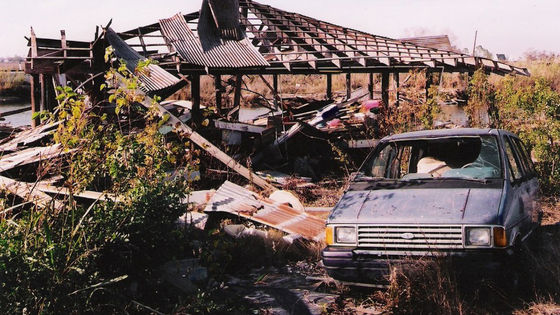The strongest class hurricane has more than tripled over 100 years ago

by
In Hurricane Katrina that hit the United States in August 2005, there was a total of 1836 human casualties and economic losses equivalent to about 161 billion dollars (about 17.55 trillion yen), including dead and missing people . Recent studies have shown that these large-scale hurricanes have more than tripled over the past 100 years.
Normalized US hurricane damage estimates using area of total destruction, 1900? 2018 | PNAS
https://www.pnas.org/content/early/2019/11/05/1912277116
Extreme Hurricanes Are 3 Times More Likely Now Than 100 Years Ago, Scientists Warn
https://www.sciencealert.com/the-most-damaging-hurricanes-are-now-3-times-more-likely-than-they-were-a-century-ago
Research groups such as Asrak Grinstead, who studies weather at the Niels Bohr Institute , have found that the threat of hurricanes, which have a particularly destructive effect in nature, has increased in recent years. . Grinstead et al., Based on the damage statistics of natural disasters that the US insurance industry has accumulated over the years, survey results of more than 240 tropical storms and hurricanes that landed in the United States between 1900 and 2018. And investigated the transition of hurricane damage that occurred during the first century.

by
However, the price and population of the United States are significantly different between 1900 and 2018, so it is not possible to obtain effective results by simply comparing the amount of damage. Therefore, the research group determined “area of total destruction (ATD)”, which is the total area of the area where the hurricane caused particularly devastating damage, from the damaged land area data included in the survey results. We analyzed changes in damage. The result is the following graph. The horizontal axis represents the period, and the vertical axis represents the total of ATD. From the 2000s, you can see that the area of ATD has increased dramatically.

A research group examined damage by hurricane size and found that the number of “medium” hurricanes with an ATD of 130 square kilometers or less had increased by 140% over the first century. In addition, the number of “largest” hurricanes with an ATD over 1200 square kilometers increased by 330%.
The number and scale of hurricanes is increasing due to rising sea temperatures due to climate change. It is estimated that 93% of the temperature increased by greenhouse gases is absorbed by the ocean, and this heat is the driving force of the storm. According to

by David Mark
As sea temperature rises, polar ice melts and the sea level rises, increasing the risk of flooding. In addition, as the temperature of the ocean where hurricanes occur increases, the amount of water vapor that the atmosphere can hold increases, resulting in an increase in precipitation. “The tropical storms and hurricane speeds have declined by about 10% over the past 70 years, ” said James Kosin, the National Center for Environmental Information at the US Oceanic Atmosphere Agency . He pointed out that the hurricane's slowdown caused by rising seawater temperature caused the hurricane to stay in the same place for a long time, causing more serious damage.
Mr. Grinstead, who revealed that the hurricane threat has increased dramatically compared to a century ago, “In the short term, there is no way to counter hurricanes,” before the hurricane once occurred Stressed that mankind has nothing to do, and expressed the view that a long time must be taken to combat climate change.
Related Posts:
in Science, Posted by log1l_ks







